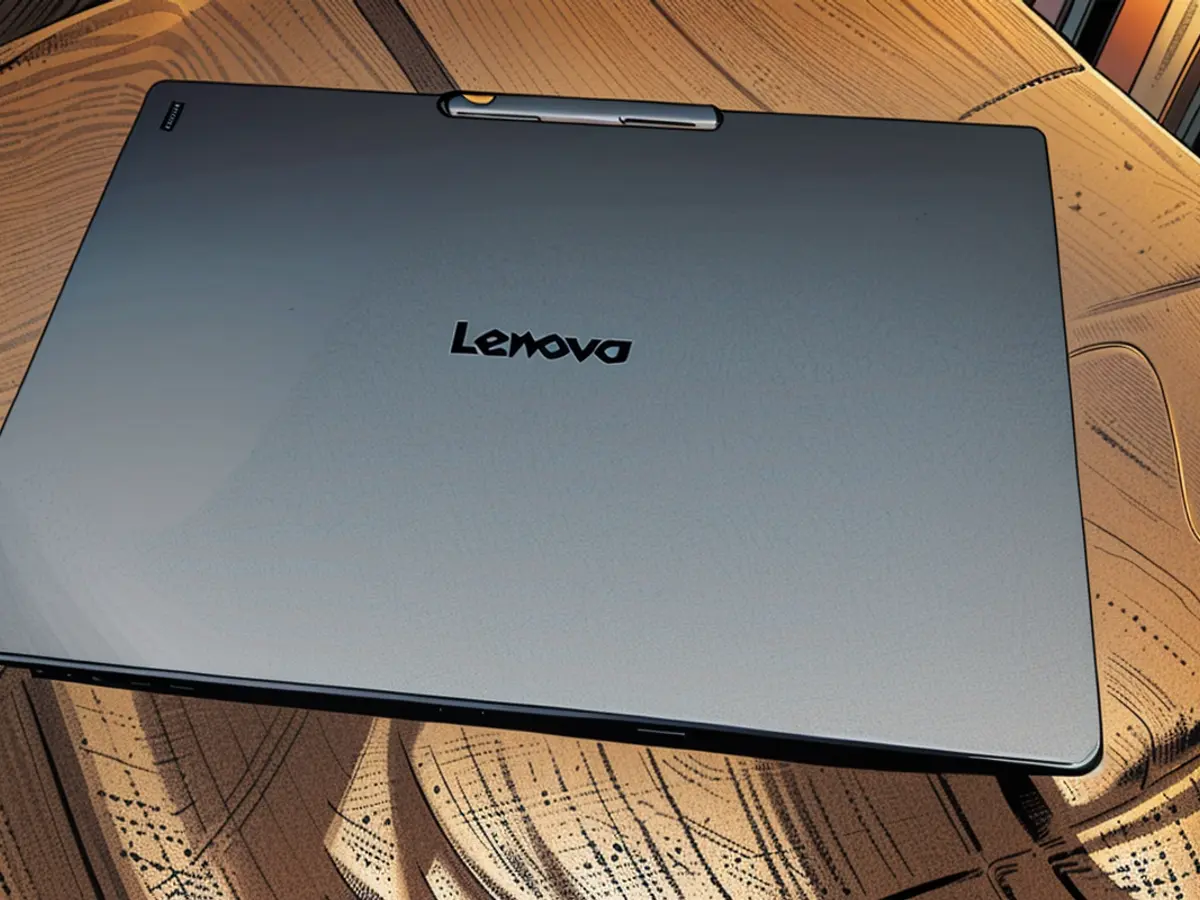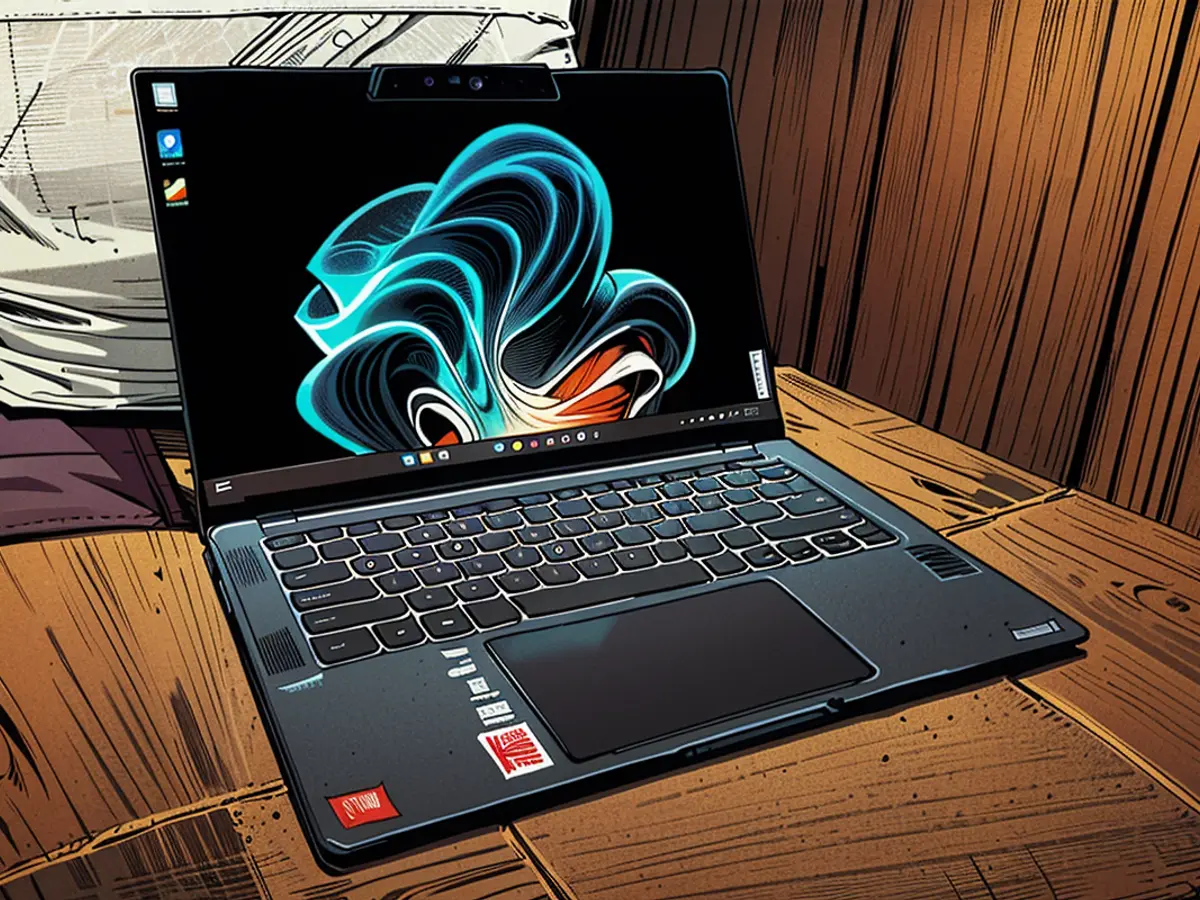Over One Month Later, Copilot+ Laptops Are Still a Mess
I’ve had my hands on a Copilot+ laptop for about a little over a month now, and I still can’t get over how overblown that name is. This was Microsoft’s chance to compete with Apple’s M-series chips and the Apple Intelligence features announced at WWDC, and yet, AI is arguably less present here than it was on the Windows 10 desktop I built in 2016. It’s probably for the best that the company delayed Recall, its headlining Copilot+ AI feature, after security concerns. But now, the PC line that should have been Windows’ Apple silicon moment has flown relatively under the radar.
Lenovo - Yoga Slim 7x - Copilot+ PC - 14.5" 3K OLED Touch-Screen Laptop - Snapdragon X Elite - 16GB Memory - 512GB SSD - Cosmic Blue$1,199.99at Best Buy


$1,199.99at Best Buy
It’s a shame for Qualcomm, too, which used Copilot+ for its latest foray into laptop processors. Unlike Apple, Microsoft isn’t going in-house for its move to ARM chips, so now it has a partner with a lot of fancy new M-series-style ARM tech to show off and no AI apps to show it off in. While Copilot+ was never meant to be exclusive to Qualcomm, ARM processors were supposed to get its features first. Now, the processors are here, but the features are still mostly missing.
That leaves me with a well-made laptop with an OLED screen, long-battery life, but some compatibility issues. It’s not a bad experience, but my time with the Lenovo Yoga Slim 7x could have been so much more.
Copilot is barely here
I’d normally start off a review talking about design or performance, but this laptop was supposed to be different, so I’d like to start by addressing the disappointment that is, or at least once was, this laptop’s big selling point.
Right now, when I open my Copilot+ laptop, I see a lock screen that says “A new AI era begins,” under which I’m encouraged to “Shop Copilot+ PCs.” Clearly, the marketing department missed the memo about the Recall delay.
Currently, there are three uses for AI in Copilot+ PCs, none of which are new and all of which are very limited.
The first is Cocreator in Paint, where you can ask the bot to generate an AI reinterpretation of whatever it is you’re drawing. It’s supposed to be a neat way to allow artists of any skill level to ideate quickly, but the two-headed turtles and multi-legged superheroes I got when I tried it shows the feature still has a ways to go. There’s nothing here that you wouldn’t find in competing features from companies like Samsung.

Credit: Michelle Ehrhardt
Then there’s Live Captions. They're a nice accessibility feature, and while they’re not new to Windows machines, having a Copilot+ PC introduces a way to get them with translations. They’re marketed for video calls, but I found them a bit slow to update for immediate conversations, sometimes taking five to 10 seconds to show new text. Unfortunately, pre-recorded video is tough, too, as you’ll need to constantly pause your video so it doesn’t get too far ahead of the captions. Caption translations also differed greatly from the official subtitles on the videos I tested with, and there’s currently no way for captions to differentiate between speakers. You’re likely better off just using the Live Captions built into Chrome, which support translation regardless of your hardware.

Credit: Michelle Ehrhardt
Finally, there’s Windows Studio Effects, which can blur your background or add minor lighting or eye contact adjustments. It comes with some Snapchat style filters, too, but none of the changes stood out to my fiancé when I tried video calling him. I’ll agree that I had to do A/B testing before I noticed any changes myself, so I’m likely to forget these options are even here, especially since most of them are already built into my most used video calling apps. Eye contact AI is the standout here, since competing options require certain GPUs, but it means little if the person I’m calling can’t tell the difference.
If I sound harsh here, it’s because none of these options live up to the name Copilot. When I hear “Copilot,” I imagine asking my computer to change my resolution or swap my background to a new color all from one text box. Right now, all pressing the dedicated Copilot button on my Copilot+ laptop does is take me to a website to talk to a chatbot—the same website you can access on any internet-connected device.
I can ask the chatbot for advice, sure, but it can’t directly interact with my machine. That’s nothing compared to the earlier version of Copilot that was installed on my Windows 10 PC until a recent update (which suspiciously came out after I started this review) took it away. That version of Copilot could actually open Windows setting pages for me, but just like the Copilot shortcut on my Copilot+ laptop, it now just takes me to a much more generic and much less useful web app.
It’s clear that Microsoft is dialing back Copilot integration while it works to fix Recall, but the result is that Copilot+ feels a lot more like Copilot-. It can do a few things my post-update Windows 10 machine can’t, but these use cases fail to live up to what the old version of Copilot was capable of.
Why get a Copilot+ PC?
So why get a Copilot+ PC, if not for Copilot? The same reason you’d get any ARM-powered laptop: battery life.
The Lenovo Yoga Slim 7x, despite not living up to its AI promises, is a great laptop for students and office workers, and a big part of that is the Snapdragon X Elite chip it comes with.
Snapdragon comes from the mobile world, where battery life is king, and you can see Qualcomm’s expertise shine through here. The company promises “multiday battery life,” and in my testing, I was able to get 17 hours of continual use before it powered down. That was while watching a 24-hour stream at a consistent 50% brightness with all battery saving features turned off, which means anyone who primarily uses their computer as a way to access the internet should be happy here. With some proper adjustments, you should be able to get through more than two full workdays without charging.
Even with more intense tasks like gaming, I achieved a good few hours of play. Specifically, I ran Shadow of the Tomb Raider in fullscreen for three hours, which is on par with what you can get from a Steam Deck and enough for a full session. This was in max performance mode, to improve gameplay, so running a less demanding game with the balanced preset would stretch the laptop’s hours even further.
The Snapdragon X Elite has compatibility issues
Even taking their strong battery life into account and ignoring Microsoft’s bungled AI launch, the ARM chips powering Copilot+ PCs aren’t quite the M-series killers they’ve been made out to be, at least not without any apps to show off their neural engines.
When I tested my laptop’s Snapdragon X Elite with Geekbench 6, a synthetic benchmark that simulates multiple kinds of use cases, I got a score of 2,279 on single-core tasks and 12,913 on multi-core tasks, which is well behind the 3,110/15,287 that Geekbench recorded for last year’s MacBook Pro running a basic M3 chip.
That’s not encouraging, especially because the Snapdragon X Elite is Qualcomm’s best laptop chip while the base M3 is Apple’s most basic laptop option in this current generation. (There is an M4 chip, but it’s limited to iPads right now.)
Another synthetic performance test, Cinebench R23, countered this, actually putting the Snapdragon X Elite slightly ahead. Here, it earned 9,882 points while rendering a complex scene, versus the 9,326 points earned by the base M3 chip.
But that only tells part of the story. In general, my testing showed that performance was fine but not standout for a thin and light laptop. What really stood out to me was compatibility.

Credit: Michelle Ehrhardt
I wanted to run another two tests on this laptop, PCMark and 3DMark, but neither were fully compatible with it. That’s thanks to the Snapdragon X Elite’s ARM architecture, and it’s going to be an issue for any early adopters.
Most Windows apps expect users to be running a chip with an x86 architecture, meaning a chip from Intel or AMD. Because Snapdragon chips don’t use x86 technology, some apps instead have to use emulation to run on them. It’s an issue Apple ran into when it swapped to ARM, but the MacBook maker has since grown an evolved ecosystem of apps that fully support the new architecture, while Windows on ARM is clearly still not quite there.
Taking my testing out of synthetic benchmarks and into the real world, I could not get apps including Baldur’s Gate 3 or Destiny 2 to work, with the former crashing whenever I started gameplay and the second refusing to boot up since it couldn't install its anti-cheat engine. Even games that did run, like Red Dead Redemption 2 and Shadow of the Tomb Raider, faced frequent crashes and needed regular driver updates.
It wasn’t a convenient experience, and for most people, I would say the battery life gain isn’t worth it yet.
If you do want to game with what you can manage to boot up, you’ll get minimal performance, although that’s to be expected given the Lenovo Yoga Slim 7x isn’t sold as a gaming laptop. I got an average 32 fps in Shadow of the Tomb Raider with low graphics at 1080p, while the more modest Total War: Warhammer II gave me 46.8 fps with low settings at 1080p. Red Dead Redemption 2 slid between 7 to 22 fps on low settings at 1080p, which is below what I would consider playable.
As a productivity laptop, none of this is too surprising, with game incompatibility being more of a canary in the coal mine for other apps here. High profile apps like the Adobe Creative Cloud work great on the Snapdragon X Elite, but expect to run into problems any time you want to go off the beaten path.

Credit: Michelle Ehrhardt
How is the Lenovo Yoga Slim 7x as a regular laptop?
I feel bad for Lenovo, because as much as I’ve slammed this laptop in my review, the issue has little to do with the laptop itself and more to do with Microsoft. As a machine, the Lenovo Yoga Slim 7x is great.
It’s barely over half an inch thick. It weighs just under three pounds. Its matte blue exterior looks premium. The 3K OLED screen is bright and vivid, with little glare and generous viewing angles. The 1080p webcam is Windows Hello-ready, and doesn’t have a notch that cuts into the screen. Sound is also just about as bassy and high-fidelity as you could expect from a laptop of this size, with some tinniness but clear and distinct vocals. And the keyboard, like almost all Lenovo keyboards, cups your hands thanks to concave keycaps shaped to your fingertips.
About the only place where this laptop falters is in the port selection, as you just get one USB-C port on either side of the device.

Credit: Michelle Ehrhardt
Should you buy the Lenovo Yoga Slim 7x?
Whether this laptop is worth it to you depends on whether you’re buying it as a Copilot+ PC, or as a long-lasting thin and light performer. If you’re trying to get in on the next generation of AI, you’re better off waiting. Copilot+ may have technically launched, but its biggest features have been taken back to the drawing board, and you’ll get little use out of this laptop’s neural processing unit until some unannounced date in the future.
If, instead, you want a great Lenovo daily driver, the Yoga Slim 7x is a good pick. It’s easy to slip into a bag, it looks great, and it’s comfortable to use. Performance is also good enough for a laptop of this size, but there is one caveat: Qualcomm chips still don’t have perfect compatibility with your existing programs.
If you use big name apps and don’t do a lot of gaming, that shouldn’t be a problem, but if you want some piece of mind, you might be better off with a standard Lenovo Yoga Slim 7, which comes with a tried-and-true AMD chip. You’ll lose some screen resolution, but a lot of what makes the 7x great can be found there as well.
The Lenovo Yoga Slim 7x starts at $1,199 for a model with 16GB of RAM and 512GB of storage, which is identical to what I tested. RAM can be upgraded to 32GB for $69 more, while storage can go up to 1TB for $45 more.
Despite the lackluster performance of Copilot features on the Lenovo Yoga Slim 7x, the laptop's Snapdragon X Elite chip still excels in battery life. With a score of 17 hours in continuous use, it surpasses expectations for an ARM-powered laptop, making it a suitable choice for students and office workers who rely heavily on web browsing.
Regarding the Copilot+ PC's AI capabilities, it's worth noting that the Cocreator in Paint feature, although limited, is comparable to competing features from companies like Samsung. The use of Live Captions with translation is also a valuable accessibility feature, although optimal results may be achieved using the built-in Live Captions in Chrome.








